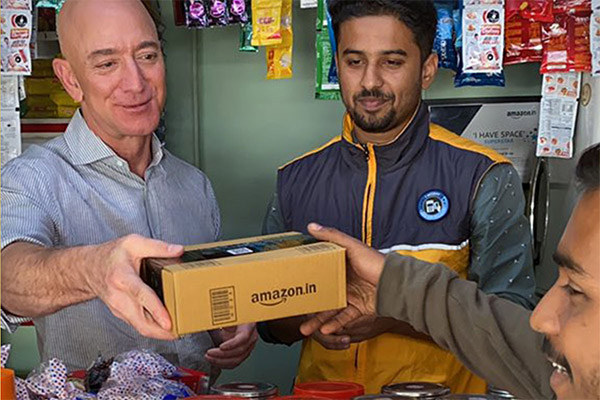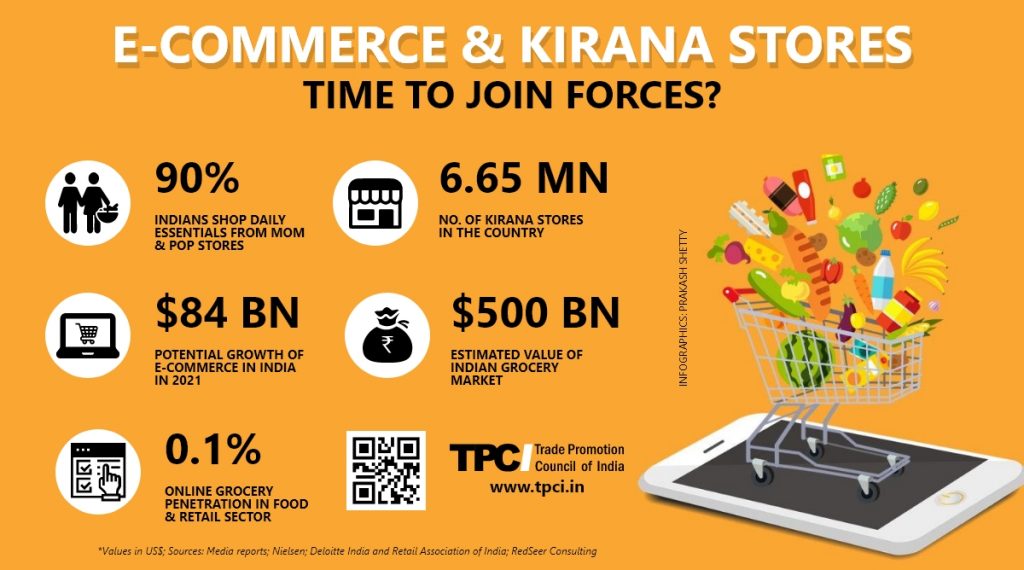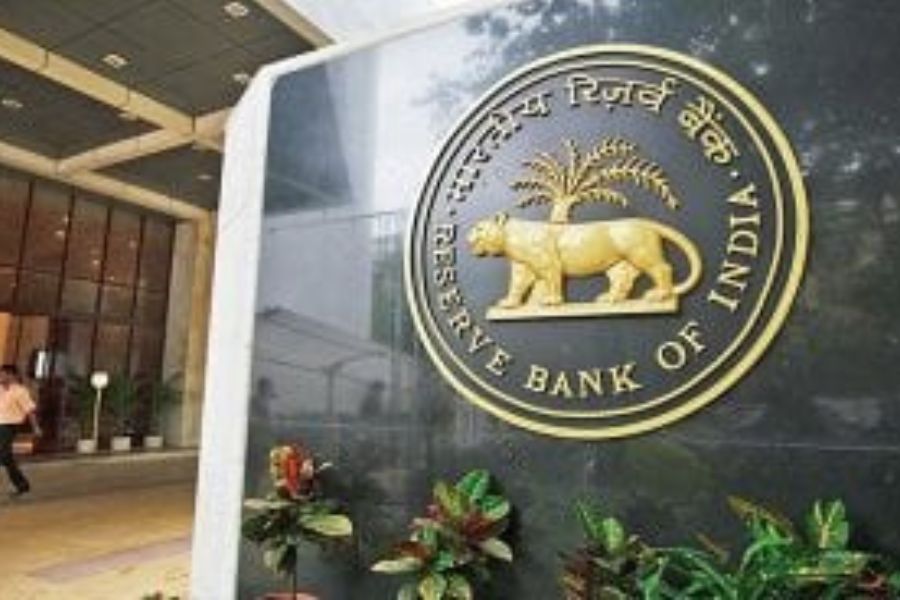Digital makeover of kiranas: Just a tap away?
• When the country found itself in the grip of the nefarious Covid-19 pandemic and subsequent lockdown, kirana stores played a major role in tackling demand for essentials, while e-commerce firms had to cease operations.
• As the country enters Unlock 1, digital majors like Facebook-Jio, Google and Amazon are exploring collaborations with kirana stores
• India is at the cusp of an e-commerce revolution, with the market projected to reach US$ 84 billion in 2021 from US$ 24 billion in 2017. Also digital consumption is rising across categories post-lockdown.
• On the other hand, kirana stores offer their own unique advantages, especially pertaining to the strong personal interface in their localities and understanding of customer needs. Therefore, both sides should explore possibilities of synergies to help each other.

On 25th March’20 when the Prime Minister announced the imposition of a pan-Indian lockdown to prevent the rampant spread of Covid-19, it suddenly brought a halt to the e-commerce operations of numerous players all over the country. The government, however, was making all possible efforts to ensure that people in the country are not left stranded when it came to essential needs. Interestingly it was the local kirana stores that saved the day.
Meanwhile, after this brief hiatus in their operations for nearly two months, a number of online platforms decided to join hands with neighbourhood mom-and-pop stores. Striking cases in point are names like Google, Facebook-Jio & Amazon. Google’s local inventory ad programme in India & 14 countries such as the US, UK, Japan, Brazil and few European nations can list products available at a store level on a real time basis in the search page itself. This Google endeavour allows consumers searching a product to see the variants available and their price in the nearest store. Simultaneously, it also helps brick-and-mortar stores in India adapt to changes in shopping behaviour in the post Covid-19 lockdown scenario.
Similarly, Amazon, the world’s largest e-commerce firm has launched “Local Shops on Amazon”. While customers benefit from access to greater selection, faster deliveries and additional value-added services, local shops can transform themselves into digital stores. The e-commerce firm can tap local neighbourhoods at a time when people in India are only buying essential commodities. Another major development that grabbed a lot of eyeballs in this regard was the move by Facebook to invest ₹43,574 crore for a 9.99% stake on a fully diluted basis in Jio Platforms. The intention behind this strategic partnership was to mobilize India’s 10 million kirana stores through Facebook’s messaging app, Whatsapp. The synergy plans to tap on WhatsApp’s ubiquity (-400 million users) and Jio’s connectivity (-388 million subscribers).
AN IDEA OLDER THAN THE INTERNET
While this idea of collaboration between local retailers and virtual platforms might seem quite to be quite avant-garde, it is in fact older than you can imagine! For example, in 1989, two gentlemen in USA Andrew and Thomas Parkinson, pioneered advancement in grocery ecommerce space, Peapod. The company required customers to physically download software from CD-ROMs onto their computer to place a grocery order. Peapod would shop for your groceries at Jewel and deliver them to your home.
This platform became the first grocer to launch digital coupons, personalized specials and online lists and was a frontrunner in the internet revolution. With 1.3 billion customer transactions, over 500 million digital offers and more than 3 billion personalized communications, Peapod has morphed into one of the best examples of grocery e-commerce in the nation. Another interesting international example is of Shoplink. Headquartered in Dublin, the platform brings together category management services and the promotional offers available to retailers, making it easier than ever to have the right range available at all times for their shoppers.
India, too, is replete with such examples. Startups like METRO Cash and Carry and Jumbotail too have been trying woo kirana stores. METRO Cash and Carry, a German B2B retailer which entered India in 2003, allows store owners to buy wholesale goods, either online or from a store, and also offers point of sale devices, modules on how to run store operations more efficiently and simple analytics to better serve customers. Meanwhile, Jumbotail, India’s leading wholesale food and grocery platform, provides full-stack services for kirana stores, including storefront delivery and payments collection for its sellers. The startup also has a fintech platform that provides payment solutions and access to working capital credit from third-party credit providers to its patrons.
Thus, while the conditions for such digital collaborations already existed in the country, COVID-19 and the consequent lockdown provided the added impetus. One thing that became apparent during this crisis was that albeit ‘branded’ categories such as fashion, consumer electronics, appliances have gone online, 90% of the Indian population still shops for a wide variety of their daily essentials from their neighbourhood bazaars, according to market research firm Nielsen. The firm estimates that there are 6.65 million kirana stores in the country and online grocery has only 0.1% penetration in the overall food and retail sector. However, India is also at the cusp of a revolution. According to a Deloitte India and Retail Association of India report titled ‘Unravelling the Indian Consumer’, the e-commerce market in the country will touch US$ 84 billion in 2021 from US$ 24 billion in 2017. The study attributes this to an increase in online shopping, smartphone usage and internet penetration across semi-urban and rural segments.
TIME FOR NEW BEGINNINGS
This partnership between kirana stores (alternatively local mom-&-pop stores in international lingo) and e-commerce players is a propitious situation for all the stakeholders involved. A recent analysis by research firm McKinsey elucidates that one in five Australians and more than half of all Thais are afraid to go outside to shop for groceries in light of the pandemic. The study adds that consequently, across countries, the frequency and share of online spending on food is rising between 16% and 70%.
While the imposition of the lockdown dealt a crippling blow to the online grocery deliveries, this problem is likely to be ironed out, now that the country is in Unlock-1 and e-commerce firms are gradually resuming operations in red, orange and green zones now. One of the advantages that this model offers is that groceries are just a tap away for digitally savvy customers. Affordability and convenience also remain the driving factors to influence a consumer’s purchase decision, with consumer and shoppers gaining access to products through last mile delivery. All that clients need to do is to browse through the assortment of products and place orders. Further, e-wallets scaling up the payment ecosystem and handiness also makes this process smooth.
This model also augers well for retailers. According to anecdotal experience, this association has helped retailers across the country to save time, reduce inefficiencies and importantly, cut pending receivables by half. Another tangible benefit is that startups like METRO Cash & Carry and Jumbotail help kirana stores generate more sales, more profits and more cash flows. They also reduce the cumbersome process of having to deal with multiple distributors; often times a store owner has to deal with up to 40 distributors on a weekly basis for 40 different products.

As Dr Rajat Agrawal, Indian Institute of Technology, Roorkee, explicates:
“Kirana shops can be extended arms for e-commerce players. These shops understand local needs better than professionals working with e-commerce players. Most of the employees of e-commerce players in grocery business are not so trained about the quality of grocery. While kirana shop owners have good skills in assessing the quality of grocery. Based on this competency, e-commerce players can use the resources of kirana shops for mutual gains.”
This liaison has benefits for ecommerce firms and FMCG players too. Firstly, when kirana stores take on last-mile delivery for larger players, the margins of these ecommerce firms improve. Secondly, this association with kiranas allows ecommerce firms the opportunity to tap grocery & food market, which constitutes an estimated 60% of the country’s total retail market and is estimated to be worth US$ 500 billion. In other words, as these ecommerce players are getting ever more hyperlocal, they are getting closer to the customer.
The same can be said about the FMCG players who typically had to rely on information passed on to them from distributors about which product is selling or not selling from local stores. Direct contact with retailers will ensure that assortments are curated by ‘local’ customer preferences rather than distributor push.
As inventory turnover and returns on capital invested increase, kirana stores using such e-commerce platforms will see improvement in metrics. Sanjay Nagi, Managing Director, Market Insight Consultants opines:
“Using the hyper local reach of the local kirana is the WIN for e commerce players. Getting a new customer is the WIN for local kiranas. That is the mutual benefit of this synergy”
While this whole process seems to be like a cakewalk, there’s more to it than meets the eye. Firstly, while most of the players have opted for a hyperlocal model, the experience of e-grocery companies like Grofers and BigBasket showed that this model was not that profitable. Eventually, these companies decided to switch to an inventory-led model. At the same time, they need to work their way around doing business, without passing on additional costs to households.
Secondly, convincing the general store owners for adapting the new approach might also be a herculean task. Typically, e-commerce firms have been seen as a threat by these shopkeepers, who fear that their customer base might be eroded.
Thirdly, a very valid question that arises is are we ready for this kind of a system? Do we have that kind of a digital infrastructure in place in the country? And does everyone in the country have access to these services? Moreover, does everyone in the country know how to make digital payments? The fourth challenge that exists is the relatively underdeveloped cold storage and logistics infrastructure in India. As per estimates, retailers currently earn a margin of around 8-23% on selling perishables and 8-10% on other grocery items.
Overcoming these challenges will merit some out-of-the-box ideas. For example, e-tail majors may have to incessantly provide lucrative offerings to kiranas to make them stick, including discounts, financing credits, working capital efficiency, data analytics, etc. Making use of technologies such as data analytics, predictive analytics to provide tailormade offerings, products, services, promotions, loyalty programmes, etc. & artificial intelligence and online social media platforms for digital marketing would also help both e-commerce and kirana stores better serve customers and maximise their profits.
Going forward, this partnership could be broadened to encompass other goods so that e-commerce players can find more profit margins and invest in this sector. In this dynamic environment, retailers and e-commerce companies would need to align their business strategies to cater to customer demand.













Leave a comment